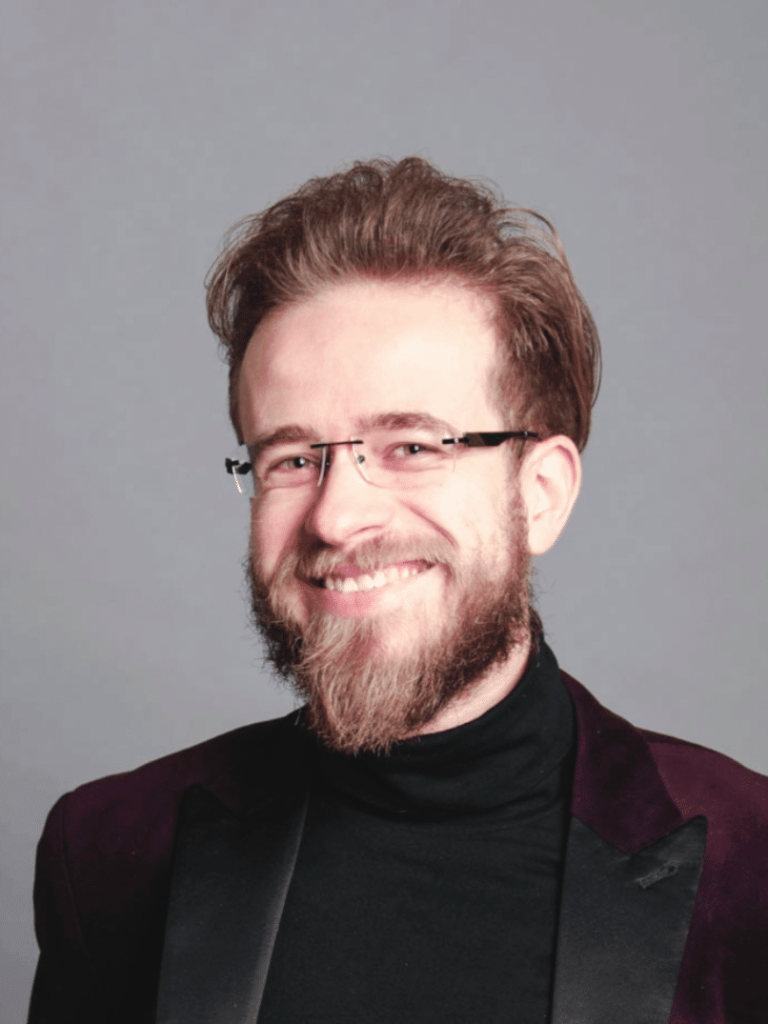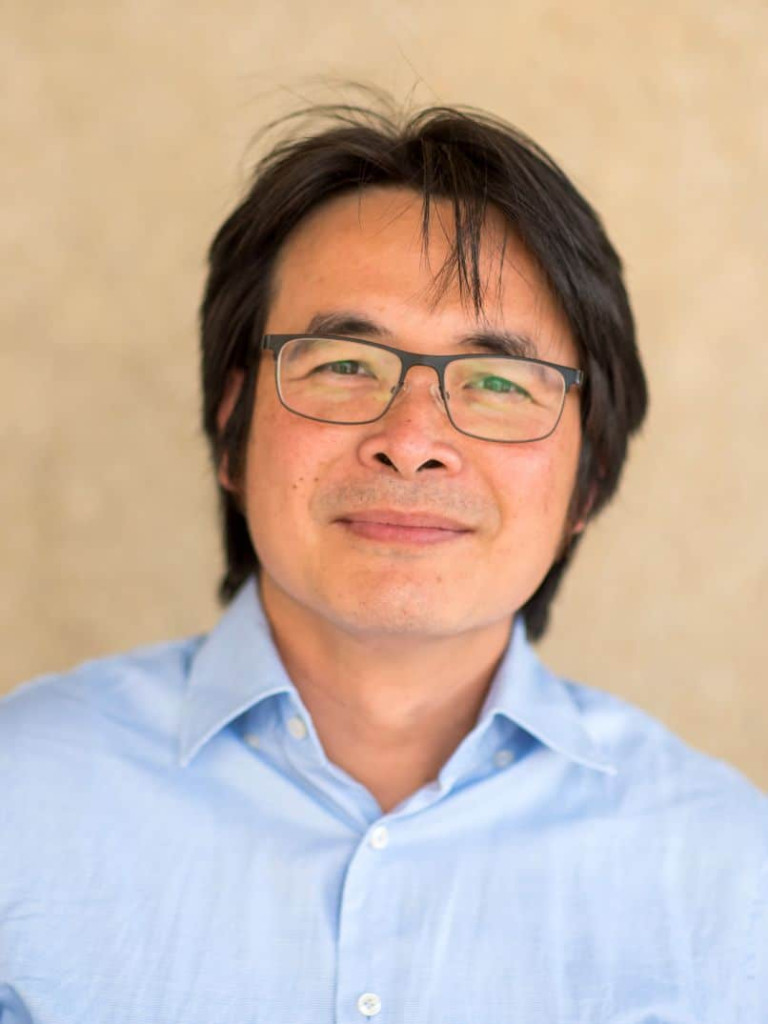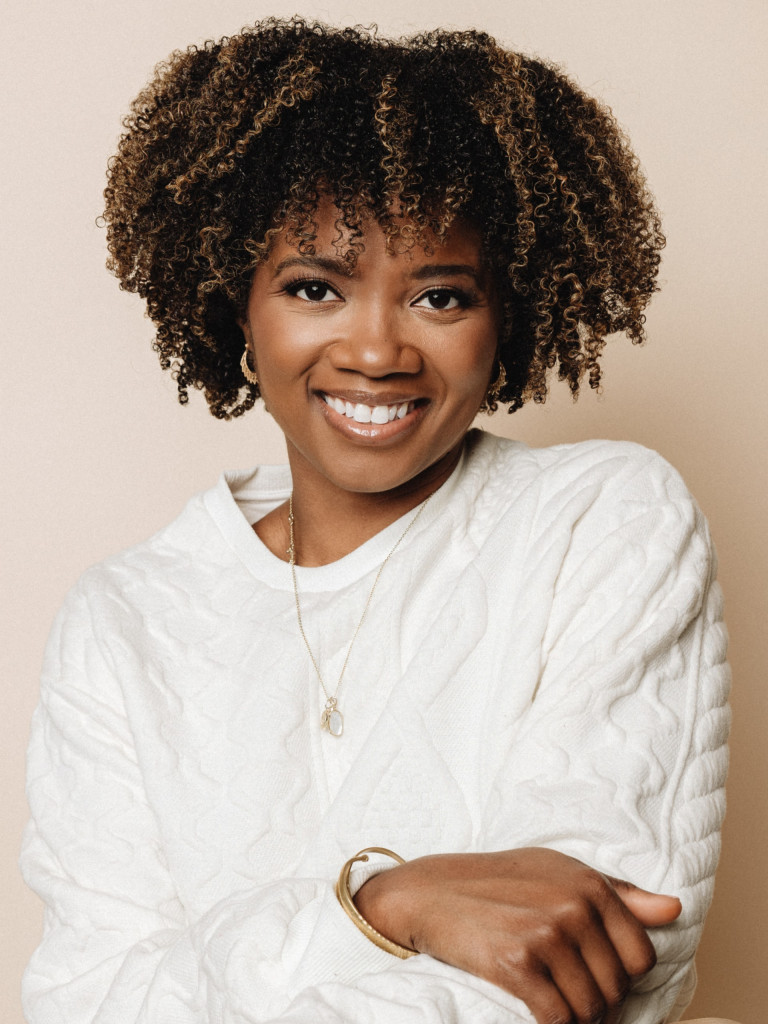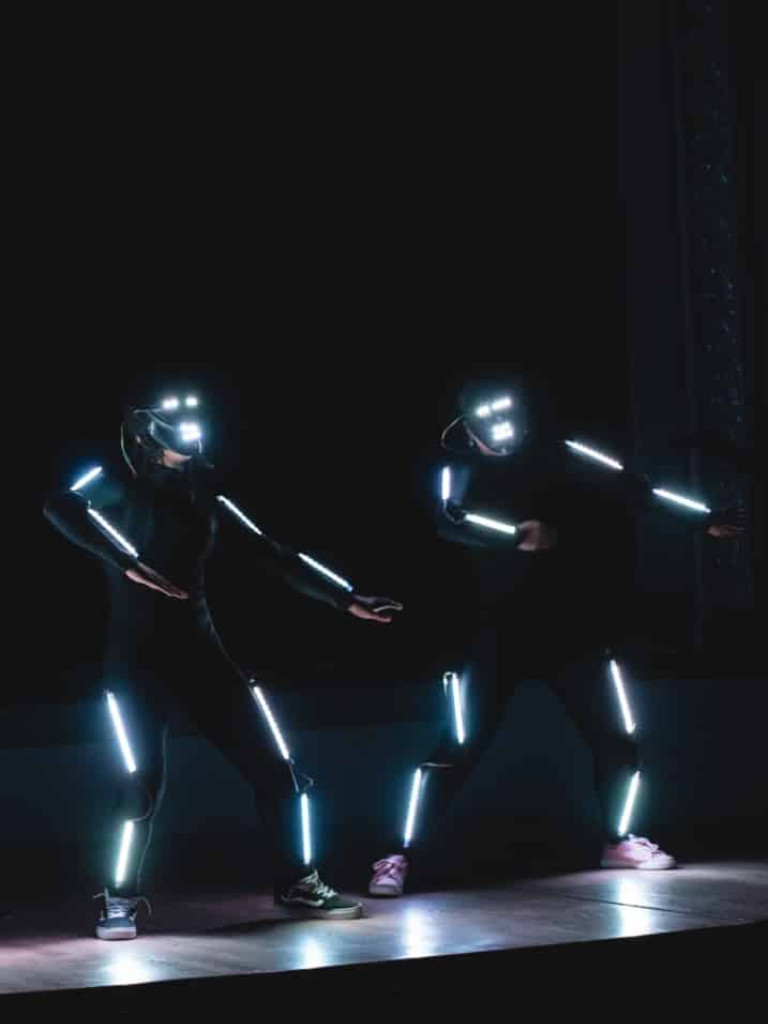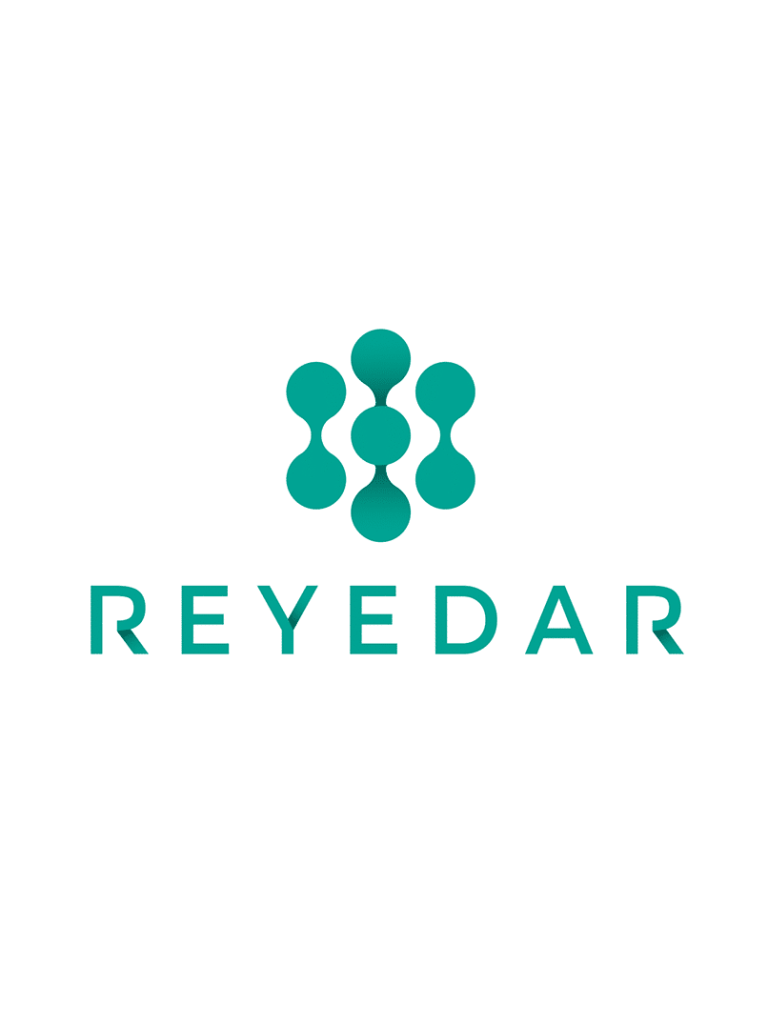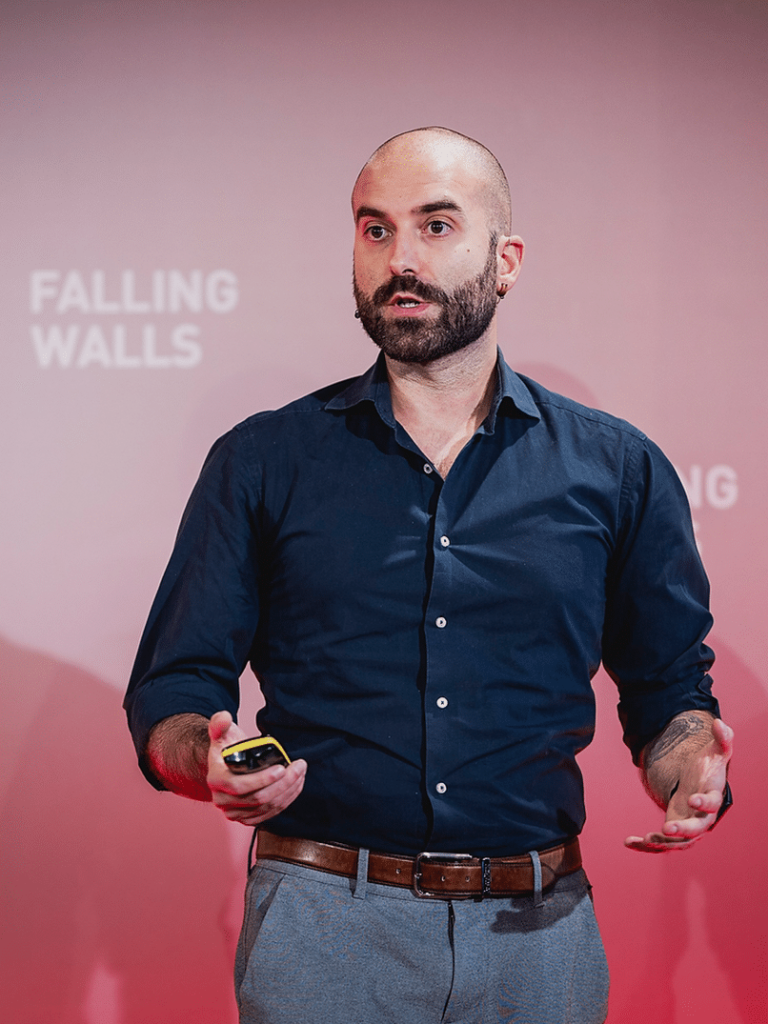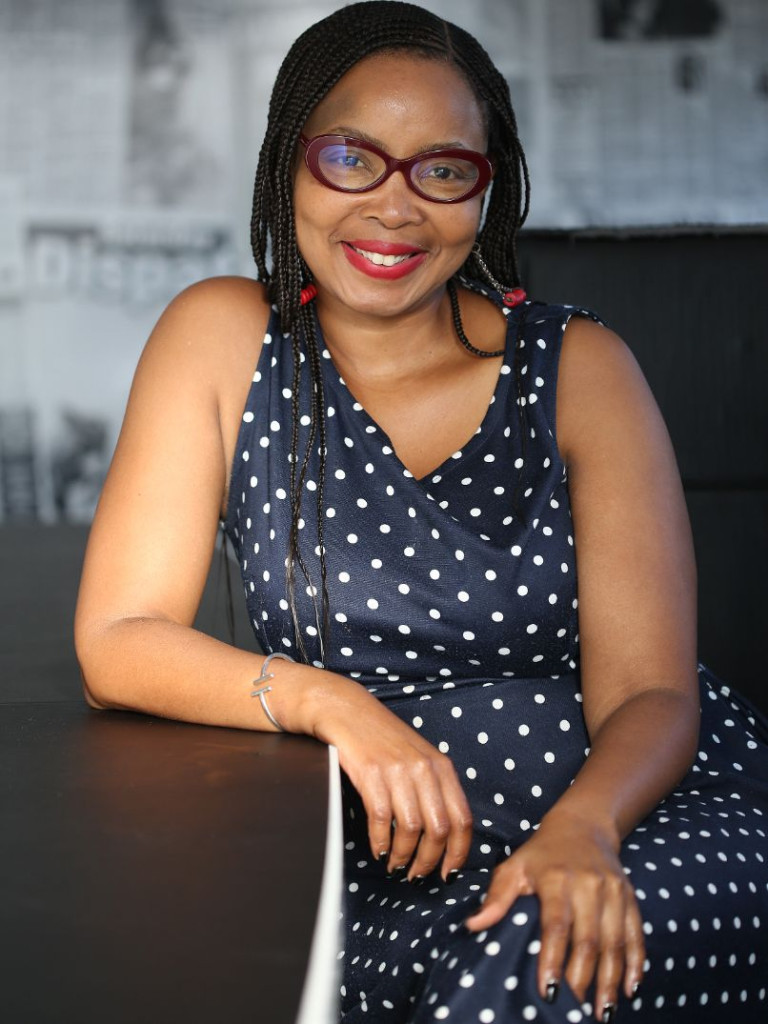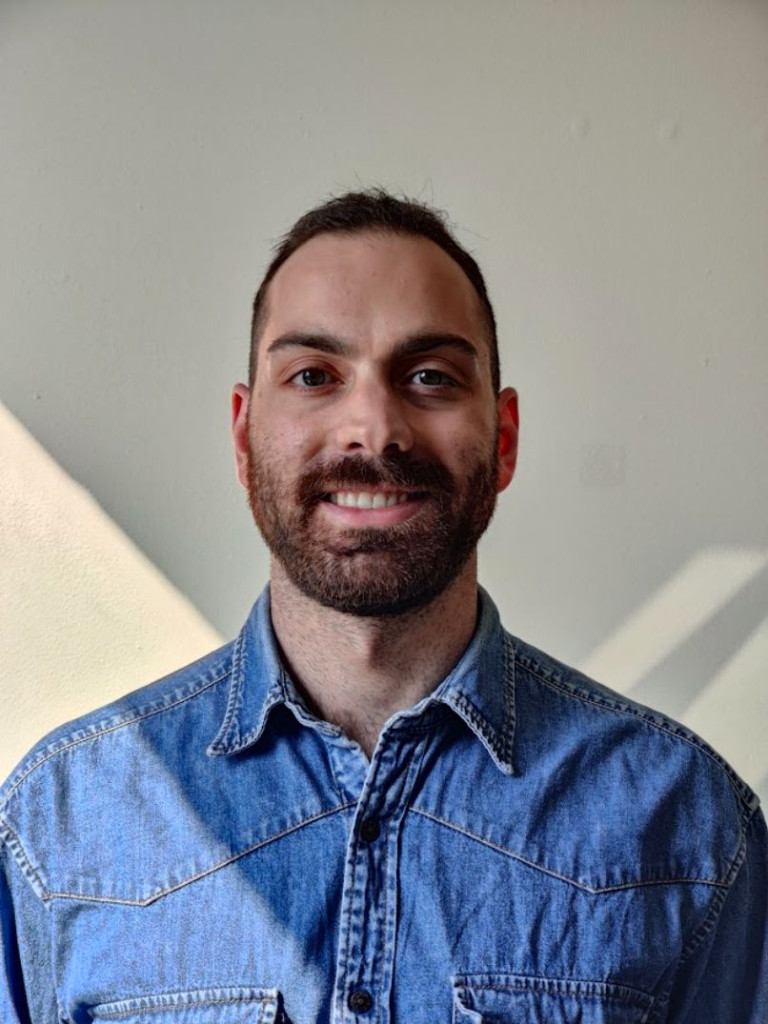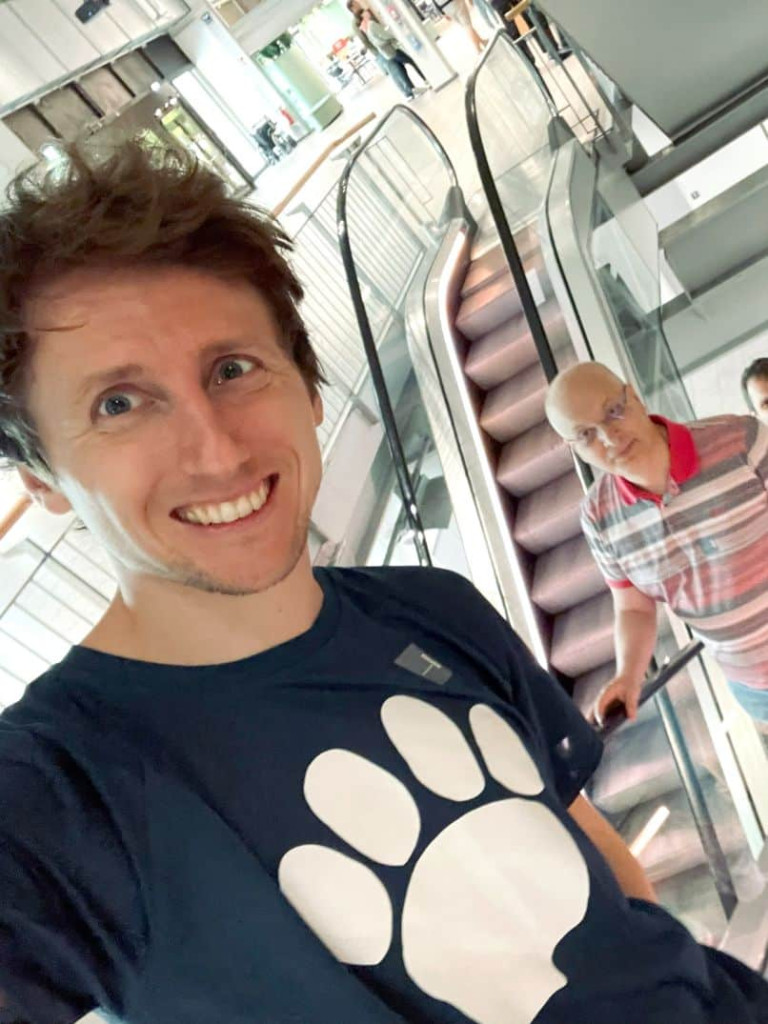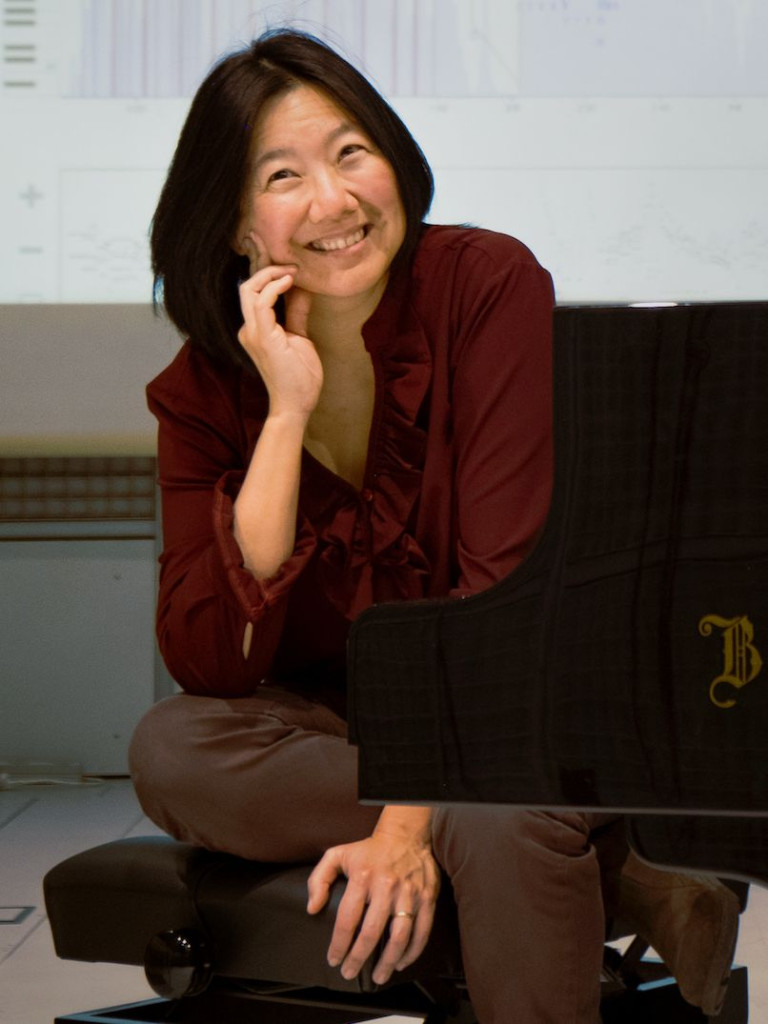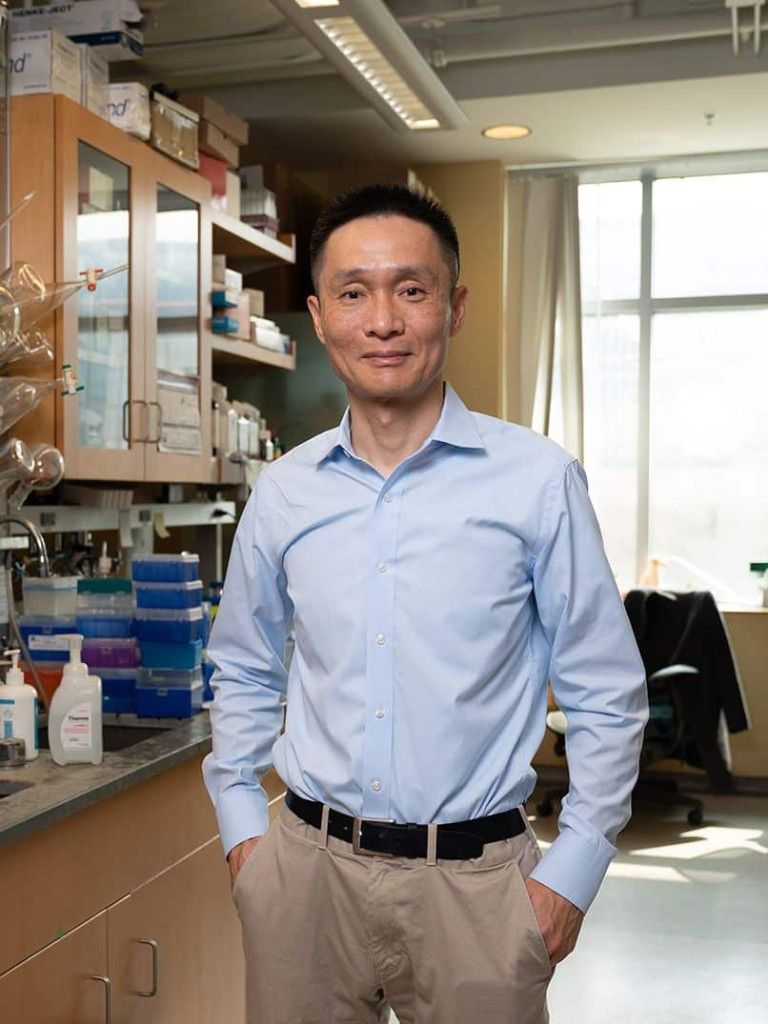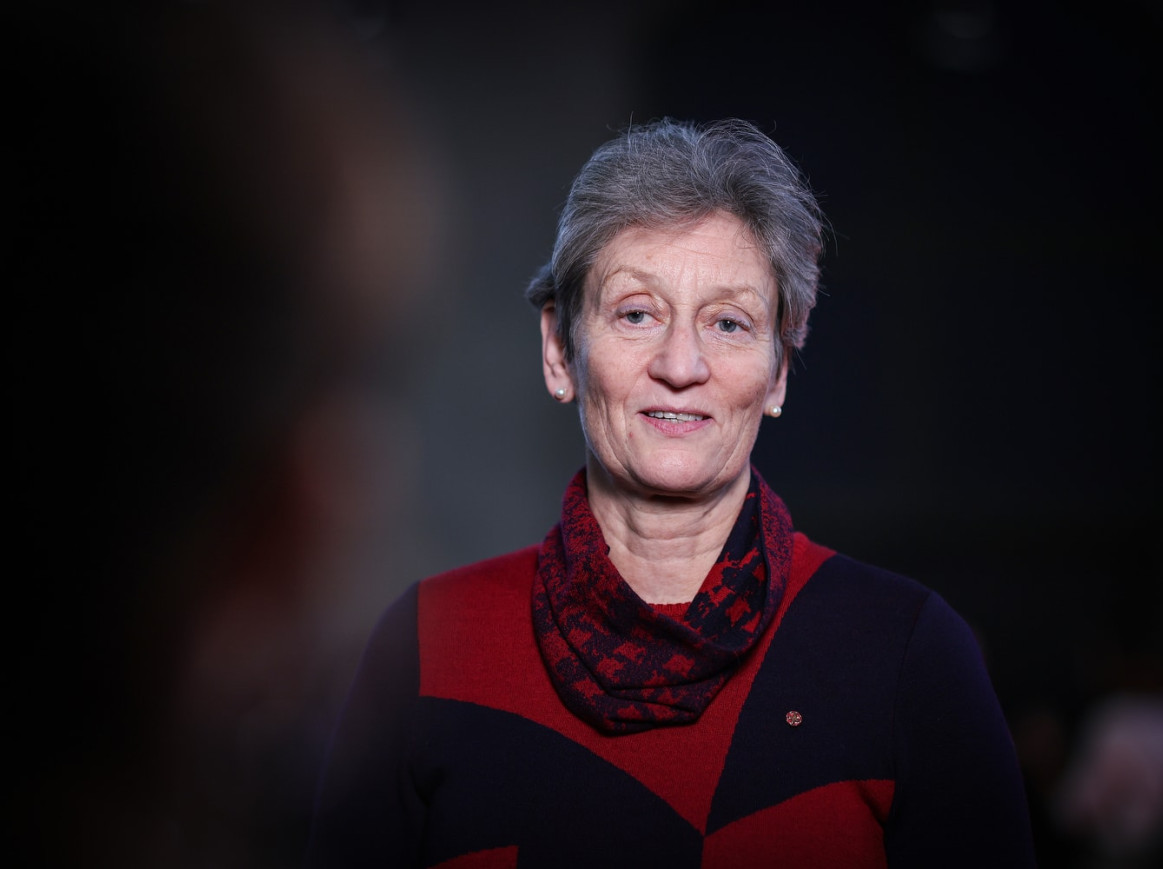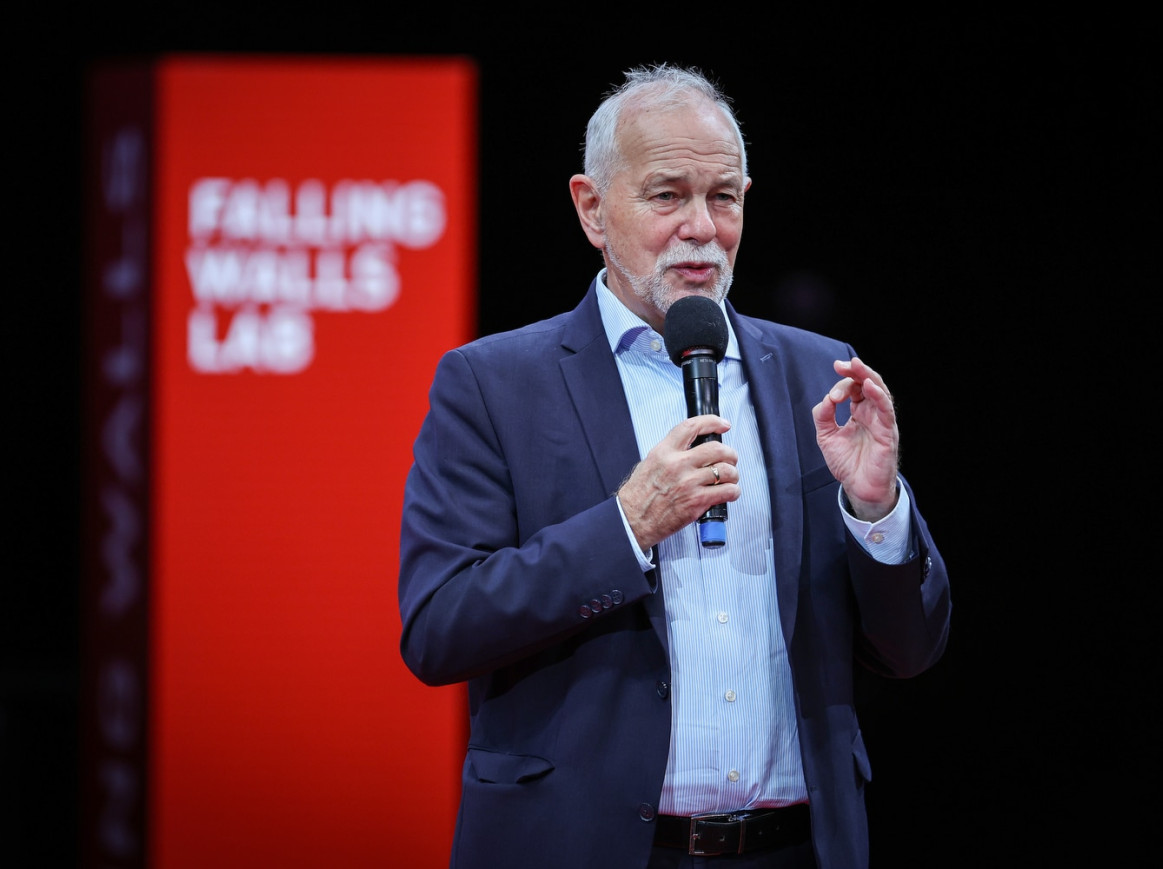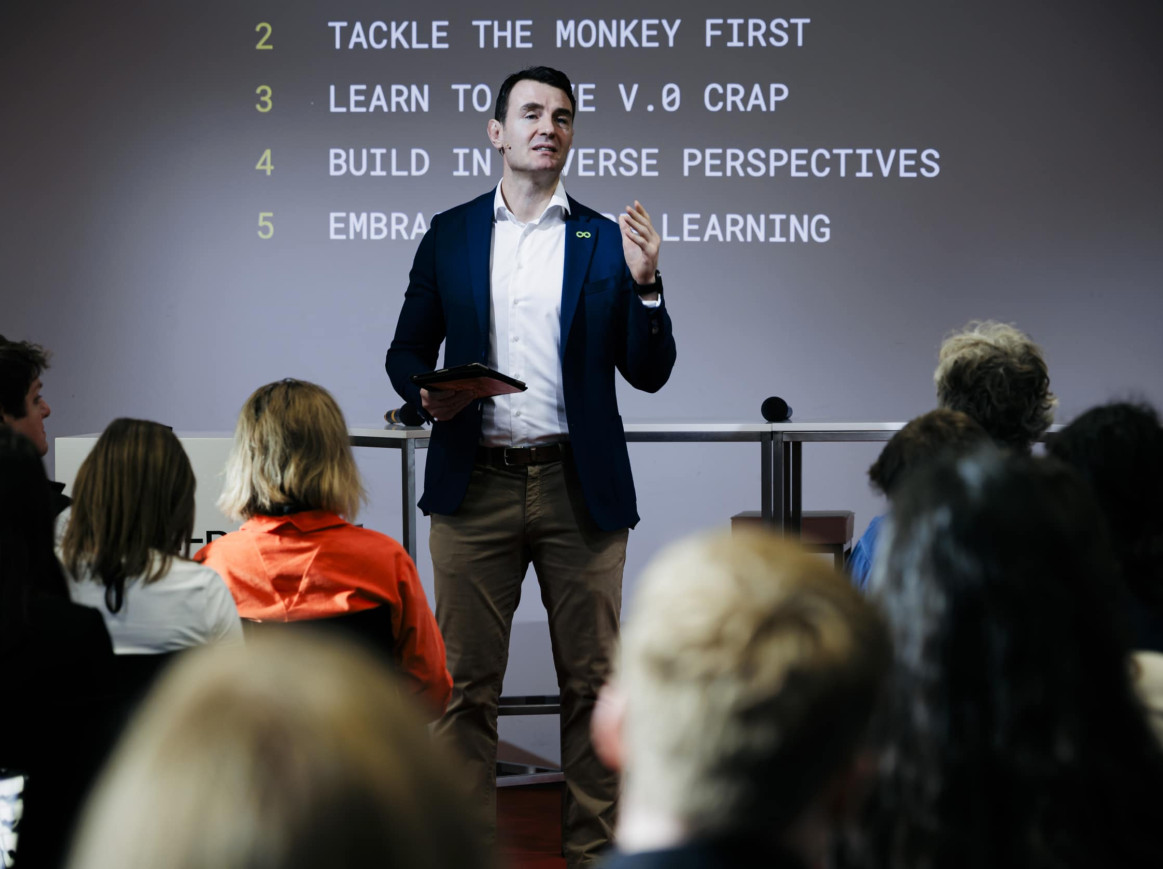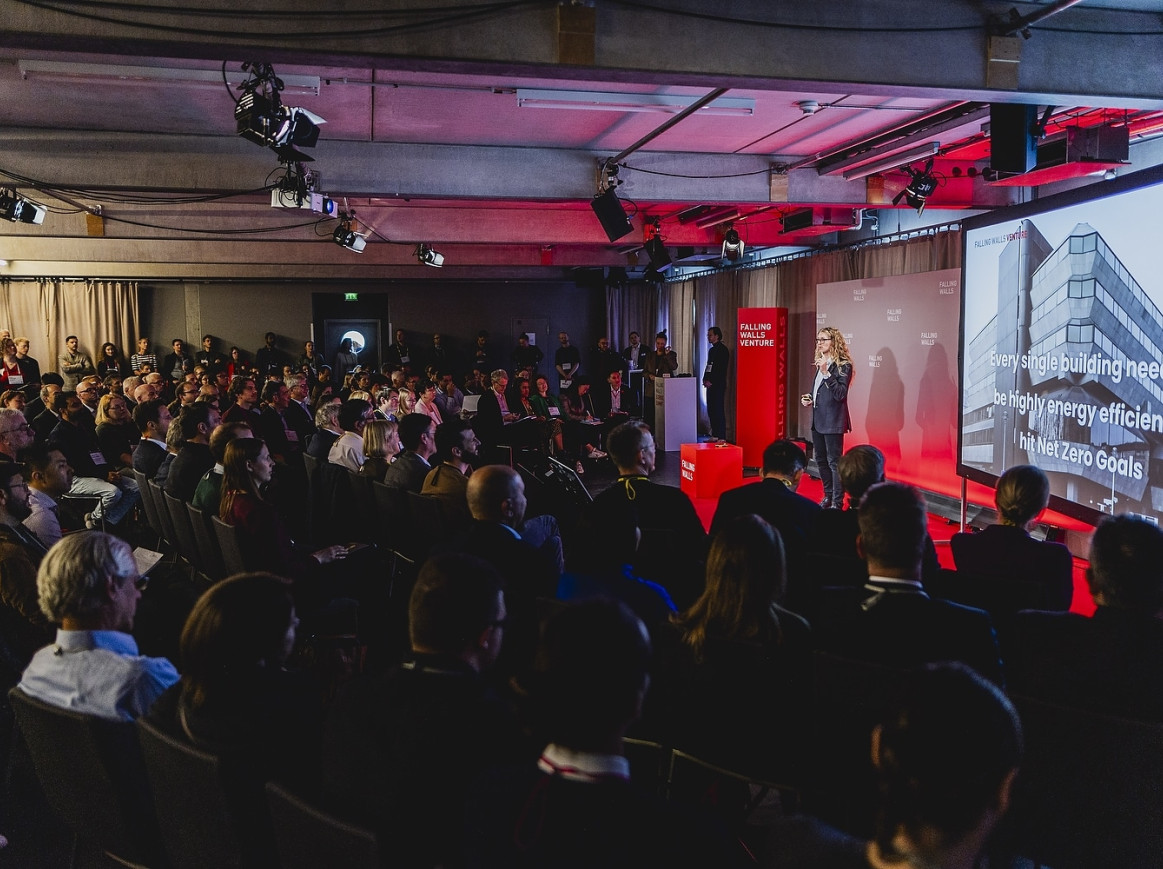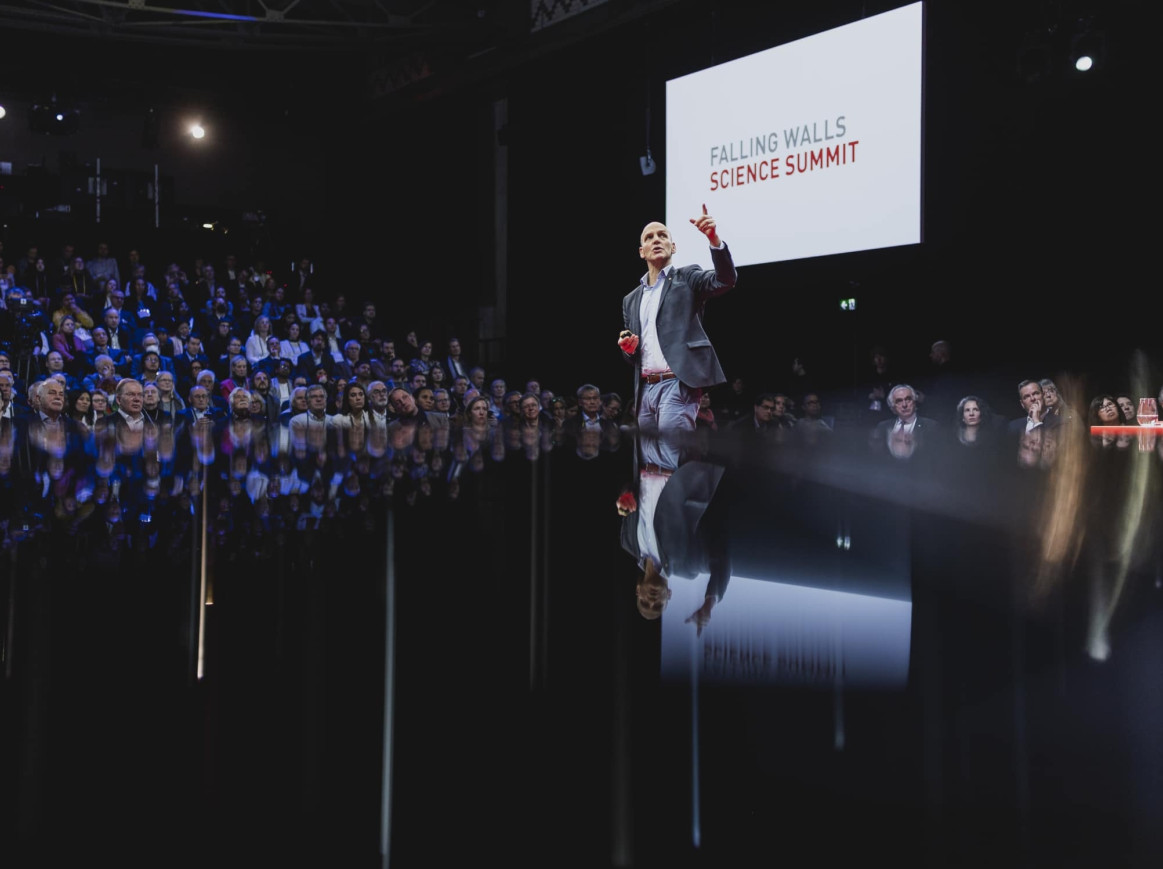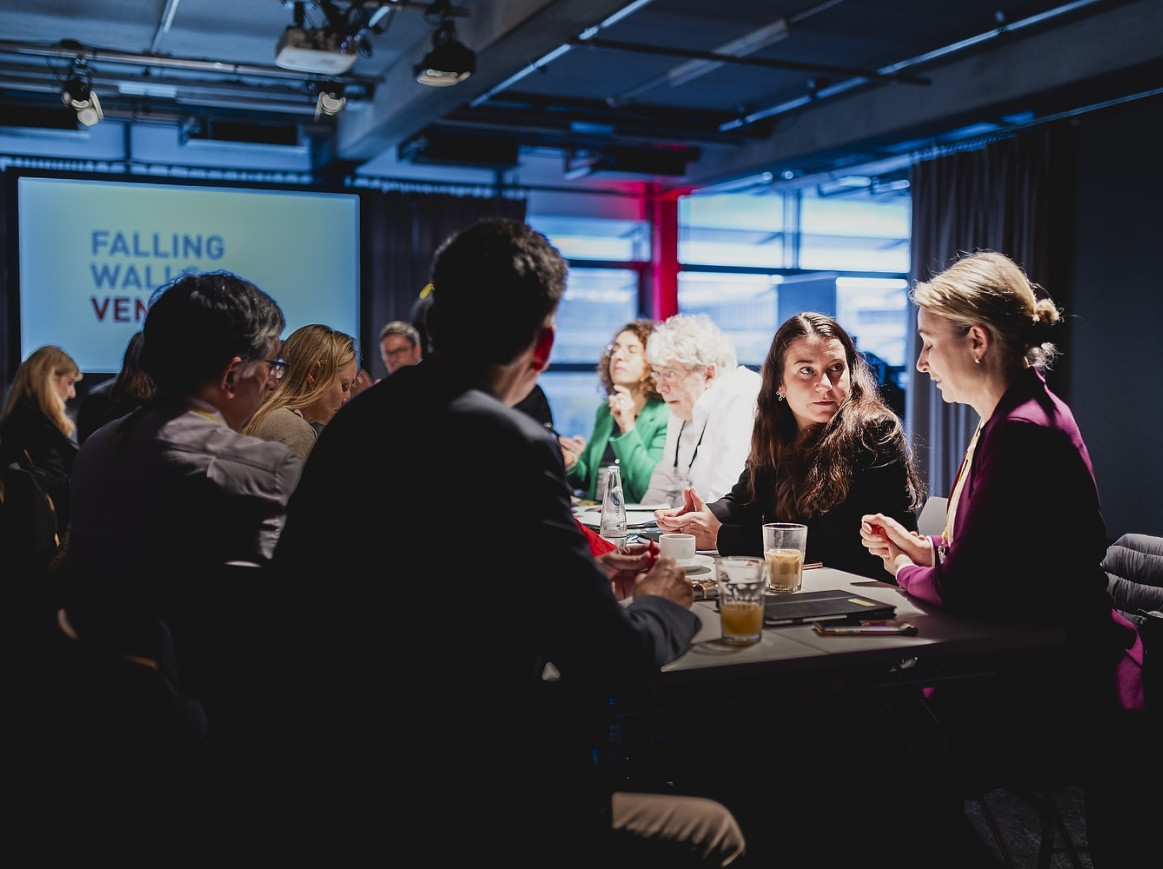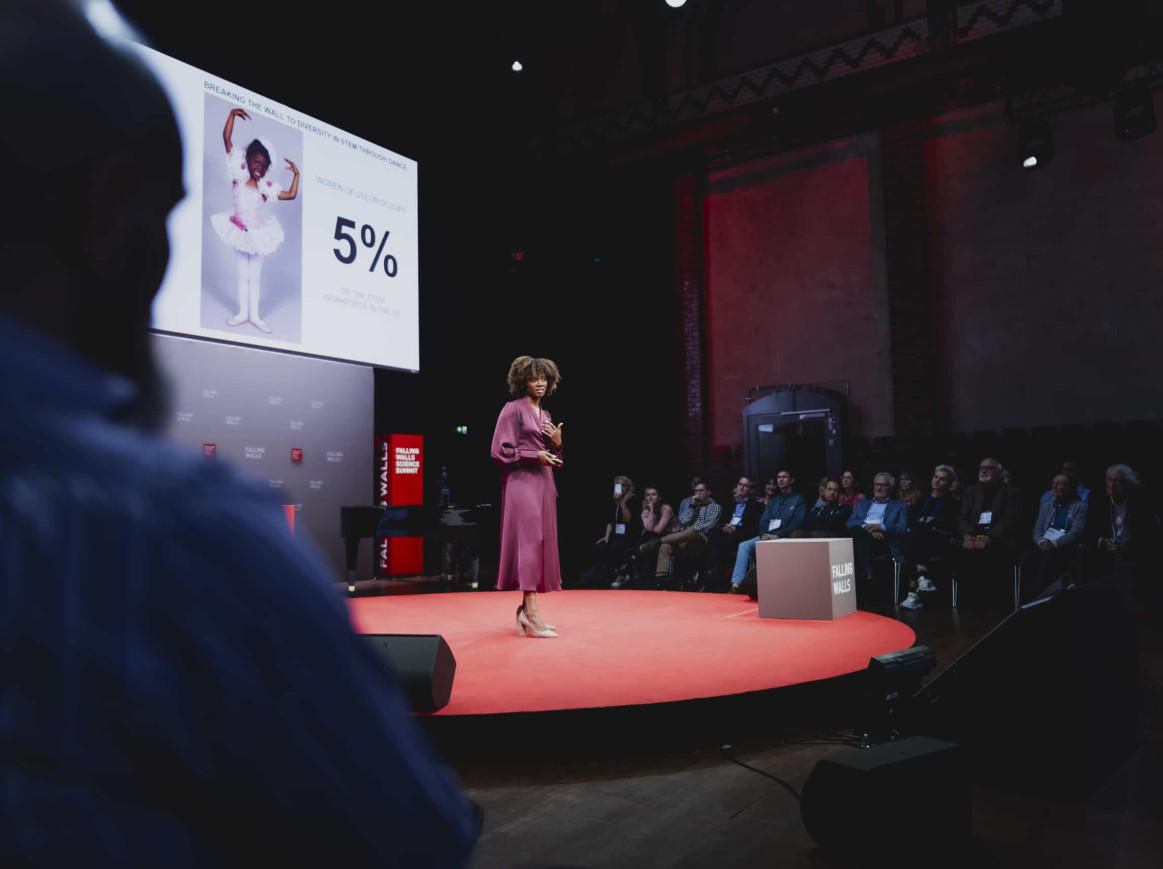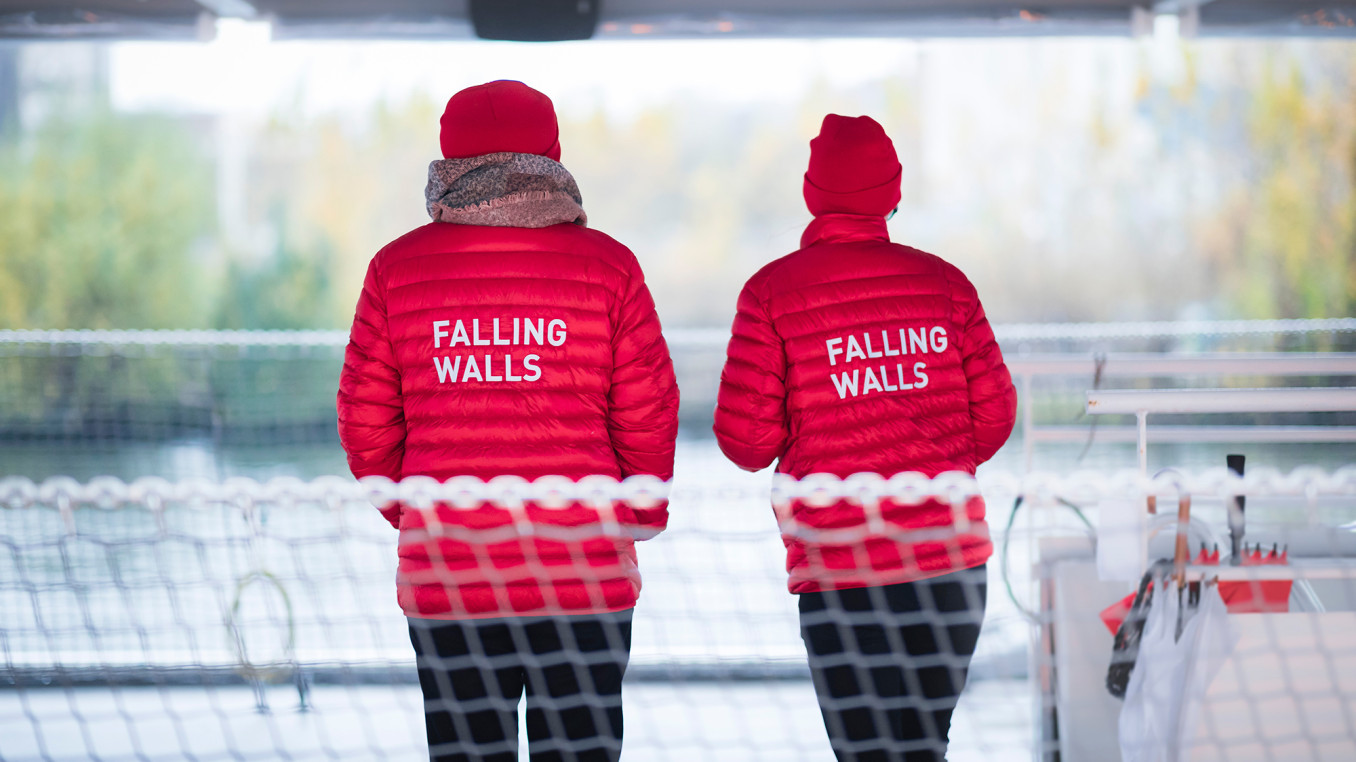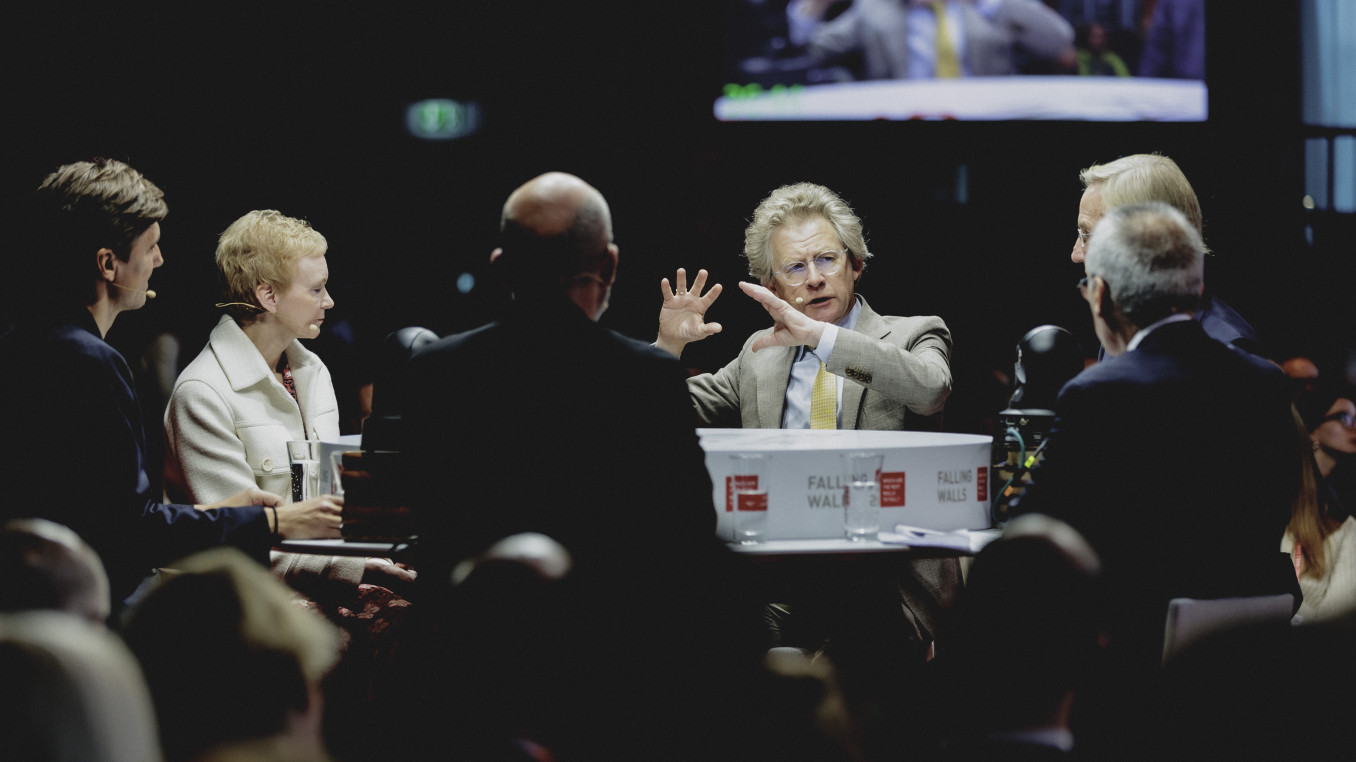Falling Walls Science Summit 2023
Reflecting on the Falling Walls Science Summit 2023
From 7 – 9 November 2023, Berlin was the epicentre of scientific exploration at the Falling Walls Science Summit. This three-day event brought together over 1,300 on-site participants and engaged more than 15,000 digital visitors from 149 countries through livestream – marking the 15th successful edition of this globally recognised platform for scientific exchange. The Science Summit annually highlights the transformative potential of science in addressing the most pressing challenges of our time.
Falling Walls Science Breakthroughs of the Year 2023
Innovative solutions with profound global impacts – from enhancing food security to advancing quantum technology, promoting global decarbonisation, addressing gender-based violence, to advocating for the democratisation of AI
Dive into the heart of groundbreaking science at the Falling Walls Science Summit 2023 Breakthrough Day on November 9. Among the laureates of the Falling Walls Science Breakthrough of the Year 2023 were distinguished speakers, including Nobel Prize winner Ferenc Krausz, 2023 Breakthrough Prize recipient Thomas Gasser, Benoit Schillings, Tammy Ma, Alena Buyx, and 2021 Nobel Prize laureate Benjamin List.
Falling Walls Science Summit Programme 2023
The 2023 three-day program featured captivating keynotes, discussions, and dynamic pitches, exploring various topics related to science, its communities, and the opportunities intertwined with science and society.
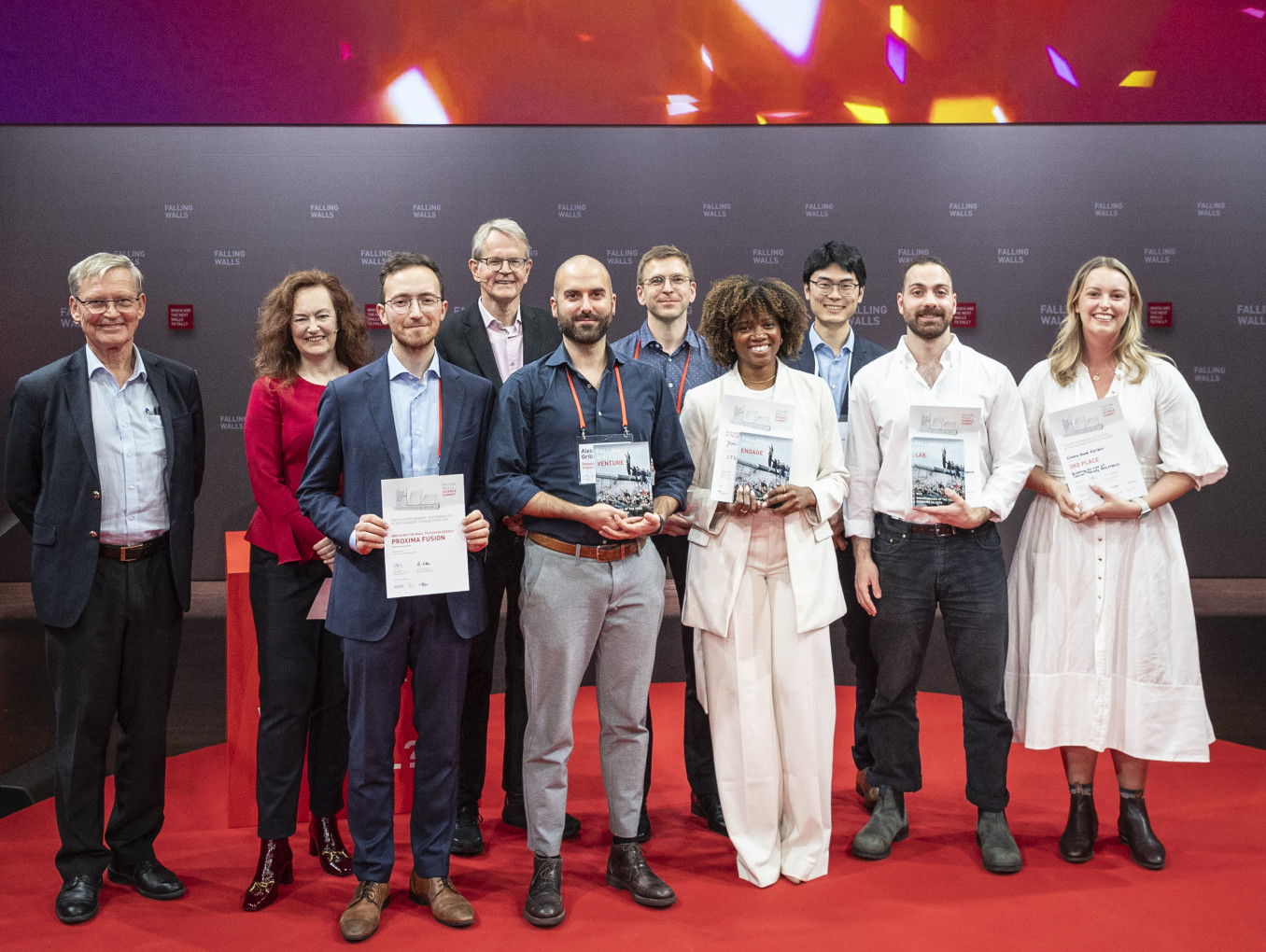

7 November - Pitch Day
Pitch Day on November 7 showcased live pitches in three categories: Emerging Talents (Falling Walls Lab), Science Engagement (Falling Walls Engage) and Science Start-ups (Falling Walls Venture). Winners in each category earned the prestigious title of Science Breakthrough of the Year 2023, and made a comeback to the stage for the grand finale of the Falling Walls Science Summit on 9 November. Congratulations to all Science Breakthroughs!


7 November - Pitch Day
Pitch Day on November 7 showcased live pitches in three categories: Emerging Talents (Falling Walls Lab), Science Engagement (Falling Walls Engage) and Science Start-ups (Falling Walls Venture). Winners in each category earned the prestigious title of Science Breakthrough of the Year 2023, and made a comeback to the stage for the grand finale of the Falling Walls Science Summit on 9 November. Congratulations to all Science Breakthroughs!
8 November - Circle Day
On 8 November, Falling Walls engages in discussions on the role of science in society. Global leaders in science from academia, government, business, and society discuss the significant challenges we encounter, and explore how scientific breakthroughs can provide foresight.
Falling Walls Circle includes several event formats that foster positive developments in science and society, whereas the Sciencepreneurs Forum focussed on innovators and decision makers at the intersection of Science and Entrepreneurship.
8 November - Circle Day
On 8 November, Falling Walls engages in discussions on the role of science in society. Global leaders in science from academia, government, business, and society discuss the significant challenges we encounter, and explore how scientific breakthroughs can provide foresight.
Falling Walls Circle includes several event formats that foster positive developments in science and society, whereas the Sciencepreneurs Forum focussed on innovators and decision makers at the intersection of Science and Entrepreneurship.
9 November - Breakthrough Day
The Science Summit 2023's grand finale provided a unique opportunity for global science leaders, researchers, CTOs, science strategists, science funders, and media professionals to exchange ideas and explore new solutions to current issues, making it a truly interdisciplinary event.
Watch the recordings of the breakthrough presentations from 9 November 2023 by clicking on the video below.
SCIENCE BREAKTHROUGH PRESENTATIONS 2023
Winners 2023
Meet our Life Sciences Winners
ADAM COHEN – HARVARD UNIVERSITY
Breaking the Wall to Imaging Bioelectricity
By imaging the electrical activity in rodent and human neurons, as well as other cell types, Adam Cohen has developed tools to convert bioelectricity into light, thus deciphering rules of bioelectrical signaling in health and disease.
CHUAN HE – UNIVERSITY OF CHICAGO
Breaking the Wall of Food Insecurity
Chuan He’s laboratory work on the functional roles of RNA chemical modifications in gene expression regulation aims to build resilient high-yielding crops.
CLAUDIA HÖBARTNER – UNIVERSITY OF WÜRZBURG
Breaking the Wall to the Molecular Evolution of RNA-modifying Ribozymes
Claudia Höbartner discovered the first methyltransferase ribozyme – a catalytically active RNA that site-specifically methylates another RNA and can be repurposed for targeting/labeling any RNA of interest.
FRANK WINKLER – UNIVERSITY OF HEIDELBERG
Breaking the Wall to a New Concept of Cancer Treatment
Frank Winkler discovered that tumor cells of incurable brain tumors interconnect with neuron-like processes to a communicating multicellular network that resists all standard therapies and can repair itself.
JEFFREY KELLY – THE SCRIPPS RESEARCH INSTITUTE
Breaking the Wall of Treating Neurodegenerative Diseases
Jeffery Kelly discovered the kinetic stabilizer drug Tafamidis to inhibit transthyretin aggregation; it’s the first regulatory agency-approved drug to slow the progression of amyloid disease.
KAREN CHRISTMAN – THE UNIVERSITY OF CALIFORNIA SAN DIEGO
Breaking the Wall to Cost-Effective, Minimally Invasive Regenerative Medicine
Karen Christman developed the first pro-regenerative biomaterial therapy to target the microvasculature of injured or inflamed tissues, reduce vascular permeability and promote cell survival and tissue regeneration.
MARC DEWEY – CHARITÉ – UNIVERSITÄTSMEDIZIN BERLIN
Breaking the Wall to Noninvasive Imaging of Coronary Artery Disease
Mark Dewey made critical refinements to Computed Tomography as a highly accurate noninvasive clinical imaging test for coronary artery disease.
PIETER ROELFSEMA – NETHERLANDS INSTITUTE FOR NEUROSCIENCE
Breaking the Wall to a Visual Brain Prosthesis for Blind Users
Pieter Roelfsema aims to restore vision in blind individuals by the electrical activation of neurons in the visual brain.
ROBERT SEDER & PETER CROMPTON – NATIONAL INSTITUTES OF HEALTH
Breaking the Wall to Malaria Prevention with Monoclonal Antibodies
Peter Crompton and Robert Seder developed monoclonal antibodies as a potential tool to confer high-level protection against malaria in key vulnerable populations.
TOBIAS ERB – MAX PLANCK INSTITUTE FOR TERRESTRIAL MICROBIOLOGY
Breaking the Wall to Photosynthesis 2.0
Tobias Erb uses synthetic biology to develop photosynthesis 2.0 – a human-enabled version of the operating system of the global carbon cycle, providing novel solutions for improved carbon capture in agriculture, biotechnology, and chemistry.
Meet our Physical Sciences Winners
ARNE THOMAS – TECHNISCHE UNIVERSITÄT BERLIN
Breaking the Wall to Store the Energy of Sunlight
Arne Thomas investigated highly porous organic photocatalysts, prepared at ambient conditions, which allow to tailor their structure and optoelectronic properties.
HONG TANG – YALE UNIVERSITY
Breaking the Wall to the First Photonic Circuit Integrated Ti:Sa Laser
Hong Tang produced the first photonic circuit integrated Ti:Sa chip laser with an ultralow threshold, a breakthrough in solid-state laser technology, integrated photonics, ultrafast optics and spectroscopy.
KESHAV DANI – OKINAWA INSTITUTE OF SCIENCE AND TECHNOLOGY GRADUATE UNIVERSITY
Breaking the Wall to Imaging the Momentum-Forbidden Dark Excitons
Keshav Dani developed a novel class of instrumentation in multi-dimensional photoemission spectroscopy re-iterating its value for quantum technology applications.
LIBOR ŠMEJKAL – JOHANNES GUTENBERG UNIVERSITY MAINZ
Breaking the Wall to Magnetic Quantum Matter
By analysing all possible mathematical symmetries of the spin in magnetic crystals Libor Smejkal identified altermagnets and opened new routes toward sustainable nanoelectronics.
LEO GROSS – IBM RESEARCH EUROPE - ZURICH
Breaking the Wall to Resolving Single Molecules
By using a microscope with atomic resolution, Leo Gross discovered novel chemical reactions that reveal new molecule structure and can impact cleaner combustion, medical research, chemical synthesis and devising novel molecular machines.
MIKHAIL LUKIN – HARVARD UNIVERSITY
Breaking the Wall to Quantum Information Processing
Mikhail Lukin used neutral atom arrays trapped and transported by optical tweezers to realize the programmable generation of entangled graph states.
PABLO JARILLO-HERRERO – MASSACHUSETTS INSTITUTE OF TECHNOLOGY
Breaking the Wall to Twistronics
Pablo Jarillo-Herrero constituted the new platform ‘Twistronics’ which makes it possible to realize most of the quantum phases of matter known in physics.
THOMAS KLINGER – MAX PLANCK INSTITUTE FOR PLASMA PHYSICS
Breaking the Wall to Fusion Power with Wendelstein 7-X
Thomas Klinger used the stellarator “Wendelstein 7-X to deliver major breakthroughs in creating a fusion-relevant plasma that paves the way to make fusion power finally available to the world.
VALENTINA EMILIANI – VISION INSTITUTE, CNRS
Breaking the Wall to Neural Circuit Manipulation at Cellular Resolution
Valentina Emiliani proposed optical methods for precise control of individual neurons or ensembles of neurons in the brain mimicking specific patterns of brain activity and relating them to animal behavior.
VIVEK POLSHETTIWAR – TATA INSTITUTE OF FUNDAMENTAL RESEARCH
Breaking the Wall of CO2 Net Zero Using Black Gold
To realise CO2 “net zero”, Vivek Polshettiwar’s developed material “BLACK GOLD” absorbs the entire visible and near-infrared region of solar light and catalyzes CO2 to fuel conversion at atmospheric pressure and temperature using solar energy.
Meet our Engineering & Technology Winners
CAO THANG DINH – QUEEN’S UNIVERSITY
Breaking the Wall to Carbon Capture Technology
Cao Thang Dinh developed a novel system that integrates carbon capture and conversion in a single step, addressing the biggest challenge in carbon dioxide conversion technology — low energy efficiency.
JODIE LUTKENHAUS – TEXAS M&A UNIVERSITY
Breaking the Wall to Organic Batteries
Jodie Lutkenhaus pioneered organic batteries as an alternative to today's lithium-ion batteries, which are presently sourced from critical materials that will have limited availability in the coming years.
LINING YAO – HUMAN-COMPUTER INTERACTION INSTITUTE
Breaking the Wall to Autonomous Self-Burying Seed Carriers
Lining Yao engineered a wood-based, three-tailed, biodegradable seed carrier capable of self-drilling into the ground in response to moisture fluctuations. Her invention has a higher success rate than that of natural self-drilling seeds, making it a valuable solution for agriculture and reforestation purposes.
PO-CHUN HSU – UNIVERSITY OF CHICAGO
Breaking the Wall to Human-Building-Energy Nexus
Po-Chu Hsu devised a method to provide independent and active control over visible light, sunlight, and ambient thermal radiation to building envelopes and wearable devices, accomplishing thermal comfort with zero fossil fuel and carbon emissions.
SHIH-CHI CHEN – CHINESE UNIVERSITY OF HONG KONG
Breaking the Wall to Using Ultrafast Multi-Material 3D Nanofabrication
Shih-Chi Chen developed a revolutionary nanoscale 3D printing platform based on femtosecond projection that supports nanofabrication with 20 different materials and addresses critical fabrication challenges in nanotechnology, photonics, energy, and biotechnology.
SHENG XU – THE UNIVERSITY OF CALIFORNIA SAN DIEGO
Breaking the Wall to Sense Under the Skin
Sheng Xu and his team invented a wearable ultrasound technology to sense signals from deep tissues, introducing a new sensing dimension to existing wearables.
STEVE ALBRECHT – HELMHOLTZ-ZENTRUM BERLIN FÜR MATERIALIEN UND ENERGIE
Breaking the Wall to the Limation of the Electricity Generation from Sunlight
Steve Albrecht and his team set several world records in perovskite-based tandem solar cell efficiencies, highlighting the crucial importance of new solar materials like halide perovskites for climate change mitigation, energy justice, and security.
WEI GAO – CALIFORNIA INSTITUTE OF TECHNOLOGY
Breaking the Wall to Autonomous Skin-Interfaced Personalized Healthcare
Wei Gao innovated wearable sweat biosensors, enabling them to continuously analyze a broad spectrum of biomarkers and provide insightful personalized information for a broad range of fundamental investigations and clinical applications.
XIADONG CHEN – NANYAN TECHNOLOGICAL UNIVERSITY
Breaking the Wall to Stretchable Devices Assembly
Xiaodong Chen developed a universal interface to assemble stretchable devices simply and quickly, effectively overcoming the challenge of fragile connections in such devices.
ZUANKAI WANG – HONG KONG POLYTECHNIC UNIVERSITY
Breaking the Wall to the Leidenfrost Effect
Zuankai Wang revolutionized thermal engineering with the heterogenous integration of materials with opposite thermal properties and distinct topographies, resulting in a persistent contact between liquid, solid and enhanced heat transfer.
Meet our Social Science & Humanities Winners
ARLINE GERONIMUS - UNIVERSITY OF MICHIGAN
Breaking the Wall to Population Health Equity
Arline T. Geronimus introduced an alternative model based on the weathering theory to guide how we understand health inequity.
BEATRIZ MAGALONI – STANFORD UNIVERSITY
Breaking the Wall of Police Brutality
Beatriz Magaloni's work highlights the factors that cause brutal policing practices in democratic societies and identifies institutional solutions.
ILONA MAGDALENA OTTO – UNIVERSITY OF GRAZ
Breaking the Wall of Climate Inaction
Ilona Otto proposed systemic solutions that help rewire our societies, change human resource and energy use patterns, and decrease the pressure on climate and natural systems.
JONATHAN BIRCH – LONDON SCHOOL OF ECONOMICS AND POLITICAL SCIENCE
Breaking the Wall to a Science of Animal Sentience
Jonathan Birch addresses the fundamental question of how we should treat invertebrates laying the foundations for a systematic and fully integrated science of animal sentience.
LAURA MARTIN – WILLIAMS COLLEGE
Breaking the Wall to Ecological Restoration
Laura Martin frames biodiversity restoration as a mode of collaboration with other species and shows how even in this era of rapid climate change, it is possible to manage for and design wildness.
LOUISE AMOORE – DURHAM UNIVERSITY
Breaking the Wall to Ethical Societies in the Age of Algorithms
Louise Amoore provides the rethinking of practical intervention in machine learning models that are urgently required to keep pace with the penetration of society by algorithmic systems.
MATTHIAS BRAUN – UNIVERSITY OF BONN
Breaking the Wall to Bodily Integrity in the Digital Age
Matthias Braun tackles the question of how we can think, understand, and protect bodily integrity in dealing with new technologies.
NITA FARAHANY – DUKE UNIVERSITY
Breaking the Wall to Thinking Freely in the Age of Neurotechnology
Nita Farahany's work addresses the protection of cognitive liberty in a world that is rapidly heading toward brain transparency, allowing us to track and hack our own brains but bars us from trespassing on other minds.
PAUL BEHRENS – LEIDEN UNIVERSITY
Breaking the Wall to Rethinking our Food System
Paul Behrens demonstrates why a transformation of our food system is essential to combat climate change and explains what role dietary changes in high-income countries play in this process.
PUMLA DINEO GQOLA – NELSON MANDELA UNIVERSITY
Breaking the Wall of the Female Fear Factory
Explaining how gender and fear intersect in public spaces, Pumla Gqola's "Female Fear Factory" is a theatrical and public performance of patriarchal policing of and violence towards women and others cast/read as female.
Meet our Art & Science Winners
ANA MARÍA GÓMEZ LÓPEZ – SANDBERG INSTITUTE, ROYAL ACADEMY OF FINE ART
Breaking the Wall to Self-Experimentation
Using an ophthalmological prosthetic designed to collect tears, Ana María Gómez López carried out a self-experiment to achieve an intra-corporeal plant growth in her eyelid.
CHRISTA SOMMERER & LAURENT MIGNON – INTERFACE CULTURES UNIVERSITY OF ART AND DESIGN LINZ
Breaking the Wall to The Artwork as a Living System
Christa Sommerer & Laurent Mignonneau pioneered the art of interface, in which innovative technical interfaces enable the visitor to physically interact with the artwork.
DIETMAR OFFENHUBER – NORTHEASTERN UNIVERSITY
Breaking The Wall to Plant-Based Air Quality Monitoring
Dietmar Offenhuber developed „Ozone tattoo” as a plant-based visualisation system to detect harmful levels of ground-level ozone, a pollutant connected to both climate change and air pollution.
ELAINE CHEW – KING’S COLLEGE LONDON
Breaking the Wall to Understanding Music’s Effect on the Heart
To see the effect of music on the heart, Elaine Chew creates models to characterise and visualise performed and composed music structures linking those to physiological signals from wearable sensors.
HEATHER DEWEY-HAGBORG – INDEPENDENT ARTIST
Breaking The Wall to Using Art To Reveal Xenotransplantation Research
Through her art installation, Heather Dewey-Hagborg confronts the viewer with the emerging science and medical reality of xenotransplantation research.
HELENA NIKONOLE – INDEPENDENT ARTIST
Breaking the Wall to Bio-Semiotic Innovations
Helena Nikonole developed DIY approaches for modifying human skin microbiome to produce smells that can be easily detected to self-diagnose or prevent diseases.
JANET LAURENCE – UNIVERSITY OF NEW SOUTH WALES
Breaking The Wall to An Experiential Interconnectedness Of Care For Our Nature
Janet Laurence explores human physical, cultural, and conflicting relationships with nature using evocative natural materials in her immersive installations.
MARGARET WERTHEIM – INSTITUTE OF FIGURING
Breaking the Wall to Women-Centered Community-Based Sci-Art
Margaret Wertheim works with communities worldwide to create complex sculptural installations that emulate coral reefs in a collective response to the devastation of living reefs by global warming and oceanic plastic trash.
NATALIA RIVERA & JUNG HSU – UNIVERSITÄT DER KÜNSTE
Breaking the Wall to Resist like Bacteria
Natalia Rivera developed the website Bi0film.net, which aims to facilitate the connection to alternative networks and acknowledge the importance of seeking autonomy in modern communication technologies.
SHEUNG YIU – AALTO UNIVERSITY
Breaking the Wall to the Scale and Resolution Limit in Earth Observation
With his project “Ground Truth” Sheung Yiu explores cutting-edge imaging techniques, using meticulous on-site measurements of physical structures and spectral properties of trees.
Meet our Science & Innovation Management Winners
ABDOULAYE DIABATE – INSTITUT DE RECHERCHE EN SCIENCES DE LA SANTE, BURKINA FASO
Breaking the Wall to Ownership within Malaria Elimination
Abdoulaye Diabaté is the Principal Investigator of Target Malaria Burkina Faso, a nonprofit research consortium that enables full community participation to ensure ownership and fill knowledge gaps around malaria research in Africa.
CARLOS GARCIA DE LEANIZ – SWANSEA UNIVERSITY & BLUE RIVERS FOUNDATION, UK
Breaking the Wall to Reconnecting Our Broken Rivers
Carlos Garcia de Leaniz created AMBER (“Adaptive Management of Barriers in European Rivers”) to provide the first comprehensive estimate of river fragmentation in Europe based on empirical and modeled barrier densities.
FERNANDA STANISCUASKI – FEDERAL UNIVERSITY OF RIO GRANDE DO SUL, BRAZIL
Breaking the Wall to Equality in Science for Mothers
Fernanda Staniscuaski started the Parent in Science Movement to raise awareness of the barriers faced by academic mothers and how to dismantle them.
FLORIAN MONTEL – BOEHRINGER INGELHEIM, GERMANY
Breaking the Wall to Democratize Life Science Innovation
With opnMe, Florian Montel shares well-characterized pre-clinical tool compounds with scientists from around the world who seek straightforward access to molecules of the highest quality.
HUADONG GUO – INTERNATIONAL RESEARCH CENTER OF BIG DATA FOR SUSTAINABLE DEVELOPMENT GOALS, CHINA
Breaking the Wall to Big Data for SDGs
Huadong Guo established the International Research Center of Big Data for Sustainable Development Goals (CBAS) as a global platform to organize innovative data science research for the UN SDGs.
JOSHUA NICHOLSON – SCITE, USA
Breaking the Wall to Next-Generation Citations
Joshua Nicholson created scite to help researchers better discover and understand research articles through Smart Citations.
MEHAK MUMTAZ - ILOF - INTELLIGENT LAB ON FIBER, UK
Breaking the Wall to Personalized Medicine
Mehak Mumtaz developed iLoF, a digital Al-platform to accelerate the future of personalized drug discovery and development.
PATRICK STARKE & MARKUS ZLABINGER – TU WIEN INNOVATION INCUBATION CENTER, IMAGETWIN AI GMBH, AUSTRIA
Breaking the Wall to Research Integrity
Patrick Starke and Markus Zlabinger created Imagetwin, a solution to detect manipulations and duplications in figures of scientific articles.
RAMON FLECHA – UNIVERSITY OF BARCELONA, SPAIN
Breaking the Wall to the Diversification of Citizen Engagement in Science
Ramon Flecha created ALLINTERACT, an innovative platform to foster the dialogue between scientists and citizens about scientific evidence and social impact.
ROBERT KACZMARCZYK, JENIA JITSEV AND CHRISTOPH SCHUHMANN - LAION e.V., GERMANY
Breaking the Wall to the Democratization of Large-Scale AI
Christoph Schuhmann, Richard Vencu, Romain Beaumont, Robert Kaczmarczyk & Jenia Jitsev founded LAION to democratize AI research by providing open access to advanced AI models, tools, and datasets, fostering public engagement and awareness, and promoting international collaboration to create a transparent and inclusive AI ecosystem that benefits everyone.
Meet our SCIENCE START-UP Winners
AIGNOSTICS - GERMANY
Aignostics offers AI-Powered precision diagnostics for precision medicine aiming to radically improve the treatment of patients with serious diseases using AI-powered tissue-based diagnostics.
ENHANC3D GENOMICS – UK
Enhanc3D Genomics is paving the way to a new era for data-driven therapeutic development by harnessing the power of 3D genomics and integrating multi-OMIC data collected from human samples.
GEMESYS – GERMANY
GEMESYS strives to overcome current bottlenecks in information technology by providing next-generation AI hardware, an analog chip design based on the information processing mechanism of the human brain.
ION-X – FRANCE
By providing the most efficient propulsion system available for small satellites, ION-X aims to expand the range of possible missions in low earth orbit and allow its customers to maximize the lifetime and value delivered of their on-orbit assets.
KELPI – UK
Kelpi is developing alternative packaging solutions from seaweed to replace fossil-based plastics with the aim to reduce plastic pollution and create a more sustainable world.
KITE MAGNETICS – AUSTRALIA
Kite Magnetics develops smaller, lighter, and more efficient electric motors for sustainable aviation, using a unique material called Aeroperm™ and producing motors that allow electric aircraft to fly longer distances and carry more.
LUMINESCENT – ISRAEL
Luminescent Power is developing a liquid-based isothermal engine that is a potential game-changer for waste heat to zero-emission electricity, geothermal energy, long-duration renewable storage, and gas turbine conversion.
MACROCARBON - SPAIN
To help defossilise the chemical industry, MacroCarbon is developing the world’s first vertically integrated supply chain, from aquafarming Sargassum seaweed to producing bio-feedstocks for the chemical industry.
MANA.BIO - ISRAEL
Mana.bio aims to unlock RNA therapy by developing a novel AI-based RNA delivery platform. By utilizing high throughput screening and AI, Mana created a highly efficient, ex-liver cell-specific non-viral RNA delivery solution.
NOMAD ATOMICS - AUSTRALIA
Nomad Atomics develops and deploys next-generation quantum sensors to solve the most challenging sensing problems in some of the world’s largest industries such as resources, energy, defense, and space.
ONCOLIQ - ARGENTINA
Oncoliq is developing a highly sensitive, non-toxic, non-invasive, and low-cost test to detect up to 50 cancer types with one blood draw combining molecular biology strategies with machine learning.
PROIJNI AGCHEM - ISRAEL
Projini pioneers the use of AI discovery for novel sustainable crop protection inputs. AI discovery will disrupt the $60B industry, and by new modes of action of protein interactions, Projini aims to solve crop resistance to pesticides.
PROXIMA FUSION – GERMANY
Proxima Fusion is developing fusion power plants based on the stellarator concept combining advances in stellarator optimization, computational design and superconductivity with the expertise behind the W7-X stellarator at the Max Planck Institute for Plasma Physics.
QUNASYS - JAPAN
QunaSys’ goal is to boost quantum computing user adoption through joint research projects and easy-to-use software tools that transform chemical properties into quantum algorithms.
REVERION - GERMANY
Reverion produces highly efficient reversible power plants, that can generate both carbon-negative electricity and gases (green H2 or CH4) as energy storage.
REYEDAR - NETHERLANDS
Leveraging eye-tracking technology and AI, Reyedar is developing a patient-friendly medical device for the early detection of several degenerative diseases involving eyes and brain.
SMARTBAX - GERMANY
smartbax develops new antibiotics to fight multi-drug resistant bacteria focusing on the activation of enzymatic processes instead of classical inhibition.
SONOCRETE - GERMANY
Sonocrete has developed an ultrasound technology enabling strongly increased early compressive strengths and reducing the carbon emission of concrete production by 30%.
SPECTO PHOTONICS - ITALY
Specto Photonics develops and commercializes miniaturized Brillouin spectrometers integrated on a small photonics chip. These devices can measure fundamental mechanical properties in a non-invasive and label-free manner.
TABBY THERAPEUTICS - ISRAEL
Tabby Therapeutics engineers B cells as evolving drugs and focuses on the broader applications of B cell technology in therapeutics and drug discovery.
TAMAR ROBOTICS – ISRAEL
Tamar Robotics is developing the first endoscopic robotic system focusing on small cavity surgery, such as neurosurgery, aiming to bring clinical and economic value in procedures such as pituitary, intraventricular, and skull-base tumor removal, as well as the removal of gliomas, intracerebral hemorrhage, and other brain mass.
THERMULON – UK
Thermulon is developing novel processes to produce aerogels (the most insulating materials in existence) 5 times cheaper at scale making them affordable for mass adoption in sectors like construction and EV batteries.
VILJE BIONICS – NORWAY
Vilje Bonics is developing the world’s first mobile and motorized whole-arm exoskeleton “ABELarm” for people with motor arm impairment using sensors, software, and actuators to augment weak user-initiated arm movement and enable independent execution of two-handed activities.
VOXCELL BIOINNOVATION – CANADA
Using high-resolution 3D bioprinting technology VoxCell is creating human-like vascularized tissue models which act as a screening platform to identify unviable drug candidates earlier in the drug development process.
YNNO MED – HONG KONG
Ynno Med focuses on the discovery and development of first-in-class antimicrobial drugs using our in-house developed AI-assisted technology, striving to combat the ever-present situation of antibiotic-resistant bacterial infections.
Meet our Science Engagement Winners
ANDREW MILLS – TŪHURA TUARANGI - AOTEAROA IN SPACE, NEW ZEALAND
Tūhura Tuarangi - Aotearoa in Space is a series of traveling workshops to engage visitors in hands-on science experience and technological advancements made locally.
ANNA VOELKER - SCIACCESS: BREAKING DOWN BARRIERS TO STEM, USA
SciAccess breaks down barriers to science for people with disabilities in STEM and human space exploration.
ARCHIE FORPOH - TECH FOR HIGH SCHOOL INITIATIVE, LIBERIA
Tech for High School Initiative is setting up computer technology infrastructures to support students and teachers in developing their skills through problem-solving initiatives to get practical experience using these skills.
BORIS WORM – OCEAN SCHOOL, CANADA
Ocean School is a global online education project providing young learners and educators with free-to-use modules and stories from diverse storytellers to advance environmental awareness and ocean literacy.
CLAUDIO CANALES - CONCIERTO SENTIDO: SCIENTIFIC CONCERTS, CHILE
Con-Cierto Sentido is a series of stage shows explaining scientific concepts and promoting diversity through the stimulation of the senses.
EMI KOCH – COAST 2 COAST, PERU
Coast 2 Coast is a non-profit organisation that provides educational resources that teachers can use to encourage students to undertake their own citizen science research projects and analyze their findings.
FABIAN FEUTLINSKE - NATURAL ENTREPRENEURS - NATURE-INSPIRED ENTREPRENEURSHIP IN SCHOOLS, GERMANY
Natural Entrepreneurs project empowers students to find solutions to an SDG of their choice, sharing their research across global borders to foster collaboration and networking within the youth science community.
JULIÁN AMORÍN - DR. DEMO'S LABORATORY-SCIENCE SHOW, GUATEMALA
Doctor Demo's Laboratory puts on science demonstrations using common items to explain scientific principles and each demonstration is catered to its audience to make science as accessible as possible.
KELECHI EZEUDENSI -NEURO-G PROJECT, NIGERIA
Neuro-G Clubs run in 12 schools across Nigeria and focus on peer education on a neuroscience curriculum, scientific writing and the research process, and trips to established neuroscience facilities.
KELLY ACHENBACH - COESO: COLLABORATIVE ENGAGEMENT ON SOCIETAL ISSUES, FRANCE
COESO fosters the growth of participatory research in the social sciences and humanities by enabling citizen science research projects and by developing an online working hub for science experts and citizen scientists to co-create research.
MARÍA TERESA GUTIÉRREZ MERCADILLO - COMMUNITY MONITORING: COLLECTIVE DIAGNOSIS AND ACTION PLAN FOR THE RECOVERY OF THE MANIALTEPEC RIVER WATERSHED, MEXICO
The project encourages community members to take ownership of the monitoring of their ecosystems and understanding how to take care of them, reducing pollution and encouraging collaborative efforts.
MARK PEÑALVER - THE FLOW OF THE RIVER: A COMMUNITY-BASED WATER MONITORING SYSTEM, PHILIPPINES
The Flow of the River project collaborates with local youth "water guardians" to monitor the quality of water available to the community and bring data to policymakers for change.
MAYUMI MANAMPERI - THE COMMUNITY-DIRECTED HEALTH CARE VOLUNTEERS MODEL FOR THE LEISHMANIASIS DISEASE CONTROL IN MEDAWACHCHIYA PHI AREA , ANURADHAPURA DISTRICT, SRI LANKA
The project offers workshops to communities to take control of disease prevention and care in hard-to-reach areas.
NKOSANA MASUKU – SCIENCY, ZIMBABWE
The Sciency Project offers students a dynamic and immersive STEM learning environment, participating in hands-on projects to build their academic confidence and problem-solving skills.
ROBERT LEE CHRISTER – ATELIER LABS, UK
Atelier Labs empowers disabled children to collaborate with chemists and artists in research projects, leaving them more confident and welcomed in academia and enables chemists to communicate chemistry concepts beyond verbal language.
RODRICK SAMBAKUNSI - ONE FOR ALL, ALL FOR ONE, MALAWI
One for All, All for One is a vaccine engagement project that co-creates graphic based vaccine engagement resources.
SHARON UNSWORTH – KLETSKLOPPEN, NETHERLANDS
Kletskoppen organises activities to let children from diverse backgrounds discover the science behind language through workshops, online resources, and local festivals.
SMART ISRAEL - ONE-CHILD AFRICA, RWANDA
One-Child Africa provides easily accessible science education resources and workshop opportunities to children, especially young girls through fun and interactive learning while instilling key STEM skills that prepare them for their future.
YAMILEE TOUSSAINT – STEM FROM DANCE, USA
STEM From Dance is a dance program where underrepresented minority girls learn through the creative and confidence-building aspects of dance to code lights, use drones to film, create music, and support each other in their STEM educations.
ZEINAB KHALIL - SOILS FOR SCIENCE, AUSTRALIA
Soils for Science employs citizen volunteers to collect soil samples to generate a database of microbes living in their environments and educate the public on antibiotic resistance and how to mitigate that.
